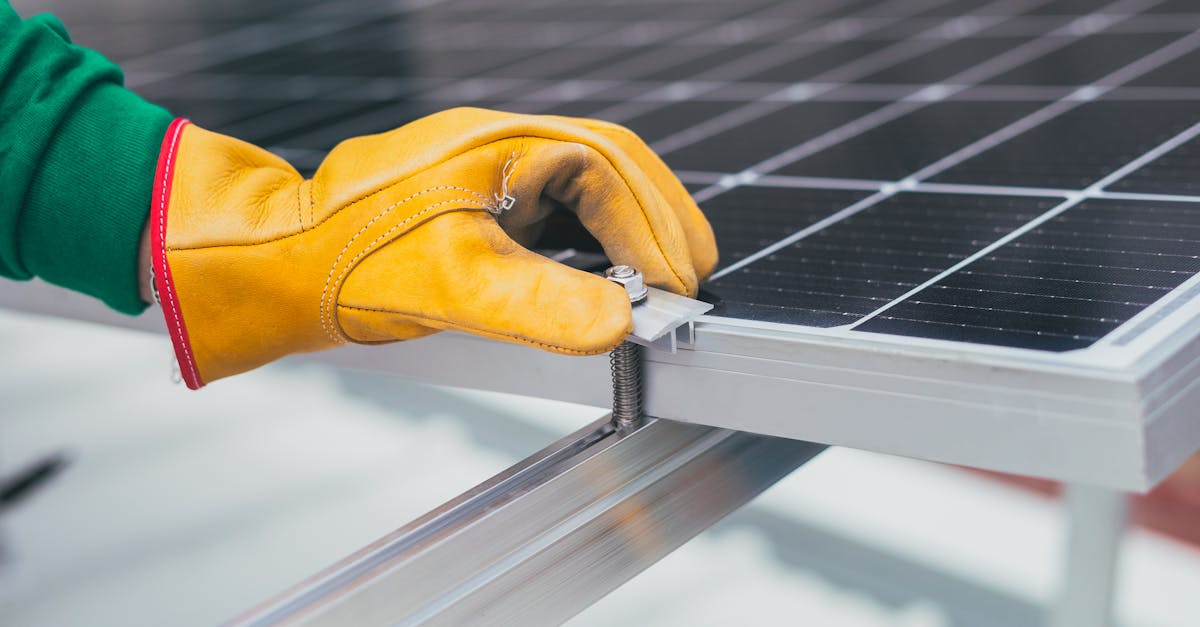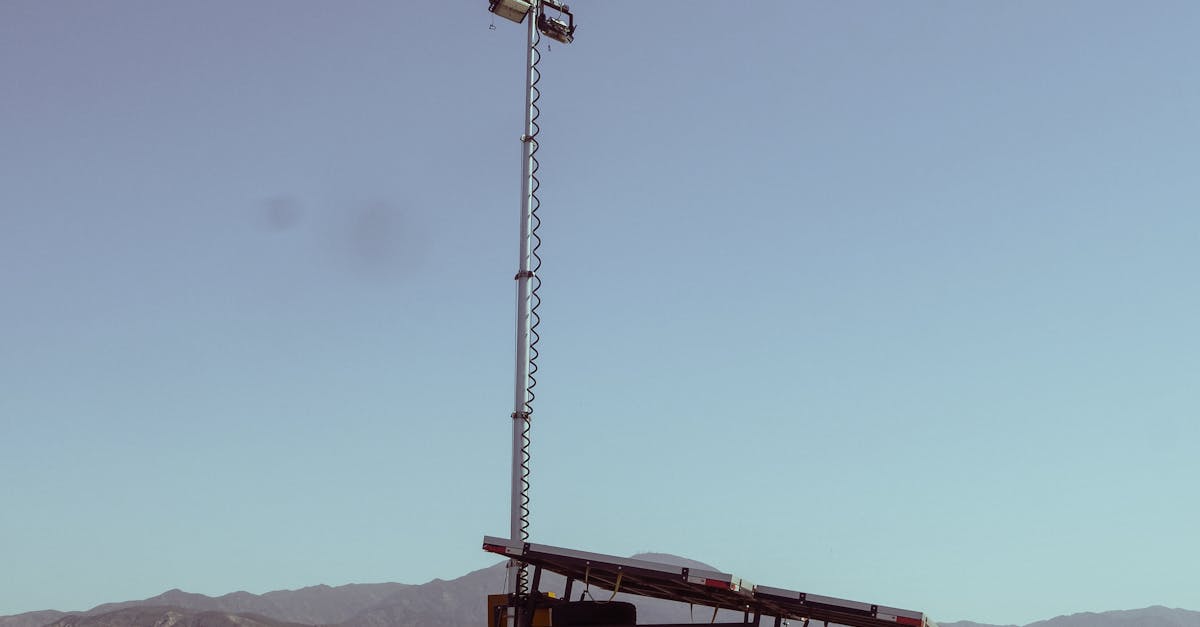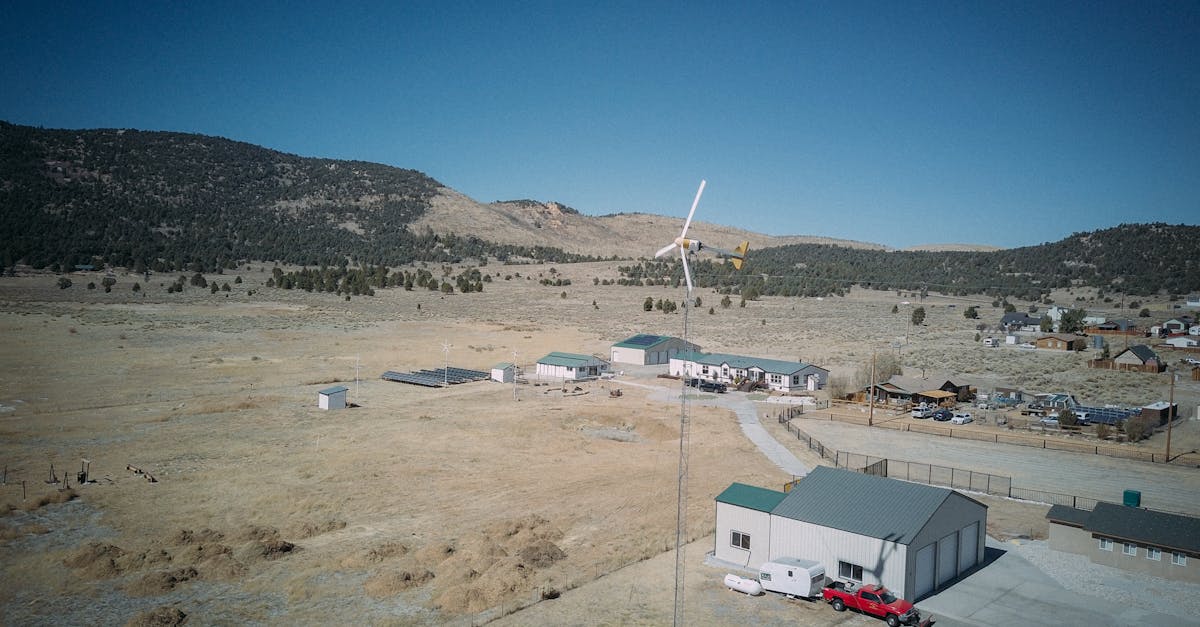
Table Of Contents
Determining System Size
The first step in determining the size of a solar panel system design is to assess the energy consumption of the household or business. This involves reviewing electricity bills from the past year to identify average monthly usage in kilowatt-hours (kWh). Understanding peak usage times and seasonal variations is also crucial, as these factors influence the amount of energy the system will need to generate. By taking a comprehensive view of energy needs, it becomes possible to estimate the appropriate capacity of the solar panel system.
Next, geographic location plays a significant role in system sizing. The amount of sunlight a region receives determines how much energy a solar panel system can produce. Different areas have varying solar insolation levels, which refer to the average solar radiation received over a specific time. Additionally, roof orientation, tilt, and shading from nearby trees or buildings can affect the overall performance of the solar panels. By analysing these elements, one can refine the solar panel system design to maximise efficiency and ensure it meets the energy demands effectively.
Factors Affecting Solar System Sizing
Several factors come into play when determining the size of a solar power system. The energy requirements of the property are a primary consideration, as they dictate the amount of electricity that needs to be generated. Homeowners should assess their historical energy consumption, typically reflected in utility bills, to establish an average usage. Seasonal variations, particularly in climates with significant temperature fluctuations, should also be factored in. Additionally, the roof’s orientation, angle, and available space influence the potential for solar panel installation and efficiency.
Local regulations and environmental conditions can further impact solar panel system design. Shading from nearby trees or structures can considerably reduce system output, necessitating a larger installation to meet energy goals. The geographic location will dictate solar irradiance levels, which affects the amount of sunlight available for energy generation. Furthermore, incentives and support from local governments can influence not only the financial investment required but also the feasibility of scaling the system appropriately. Overall, a careful evaluation of all these elements is crucial for an effective solar system sizing strategy.
Planning the Installation Process
Planning the installation process for a solar power system involves several critical steps that ensure effective deployment and optimal performance. Initially, you must conduct a site assessment to evaluate factors like roof orientation, shading, and structural integrity. This assessment will inform the Solar Panel System Design, guiding decisions on panel placement and the type of technology best suited for your location. A proper site analysis lays the groundwork for a successful installation while maximising energy capture.
Once the design is finalised, obtaining necessary permits and approvals is essential. Local regulations govern solar installations, and compliance is crucial to avoid future complications. After securing the required documentation, selecting qualified contractors who have experience with solar systems is beneficial. They can provide valuable insights during the installation process and help execute the Solar Panel System Design efficiently. By carefully planning each step, you can ensure a smooth transition to solar energy and achieve your sustainability goals.
Key Steps in Solar System Installation
The installation of a solar power system begins with careful planning and preparation. It is essential to review the approved solar panel system design before proceeding with the physical installation. This includes evaluating the site conditions, ensuring that the location receives ample sunlight and determining the optimal angle for the solar panels. Having a team of qualified professionals can streamline this process and ensure compliance with local regulations and building codes.
Next, the actual installation involves several key steps to ensure functionality and safety. The mounting structures for the solar panels need to be securely fixed, followed by the careful placement of the panels themselves. Once in position, the electrical components, including inverters and wiring systems, will be connected. It is crucial to test the entire system thoroughly to confirm everything operates as intended before finally commissioning the solar power system for use.
Understanding Financial Implications
Investing in a solar panel system design involves several financial implications that must be carefully considered. The initial costs of purchasing and installing photovoltaic panels can be significant. These expenses often include the price of the panels themselves, the inverter, mounting hardware, and installation labour. It is essential to evaluate potential savings over time, particularly in relation to energy bills. By generating your own electricity, you can drastically reduce reliance on grid power and, ultimately, save money in the long run.
In addition to upfront costs, various incentives and financing options are available that can ease the financial burden. Government programmes, rebates, and tax incentives help to offset the initial investment. Additionally, financing plans such as solar loans or lease agreements can make solar energy more accessible, allowing homeowners to benefit from the installation without paying the full amount upfront. Understanding these financial aspects is crucial for effective solar panel system design and for ensuring a sound long-term investment.
Costs, Savings, and Incentives
The financial implications of investing in a solar panel system design are significant. The initial costs can vary based on system size, equipment quality, and installation requirements. Homeowners should consider potential savings on electricity bills, which can accumulate over time. The upfront investment is often offset by long-term reductions in energy expenses, making solar energy an attractive option for many.
In addition to savings, various incentives can further enhance the financial viability of solar panel systems. Government grants, tax rebates, and feed-in tariffs may be available, depending on the region. These incentives can dramatically reduce initial costs and encourage more homeowners to adopt renewable energy solutions. Understanding these financial aspects is crucial for anyone looking to implement solar energy in their homes.
FAQS
What factors should I consider when determining the size of my solar power system?
When determining the size of your solar power system, consider factors such as your energy consumption history, the available roof space for solar panels, the local climate and sunlight exposure, and any future energy needs you may anticipate.
How do I plan the installation process for a solar power system?
Planning the installation process involves several key steps, including conducting a site assessment, obtaining necessary permits, choosing the right solar equipment, and selecting a qualified installer. It's also important to schedule the installation at a time that works for you.
What are the main costs associated with installing a solar power system?
The main costs of installing a solar power system include the purchase of solar panels, inverters, and mounting equipment, as well as installation labour costs. Additional expenses may include permits and inspections, and any necessary roof upgrades or repairs.
Are there any financial incentives available for installing solar power systems?
Yes, many regions offer financial incentives for installing solar power systems, such as government grants, tax credits, and rebates. Be sure to check local, state, and federal programmes to see what opportunities may be available to help offset your costs.
How can I calculate the potential savings from a solar power system?
To calculate potential savings from a solar power system, evaluate your current energy bills, estimate the amount of energy your solar system will generate, and determine the difference in your energy costs before and after installation. Additionally, consider any incentives that may further reduce your expenses.


